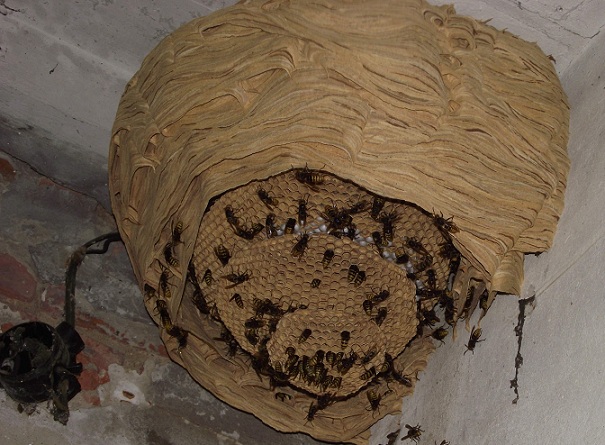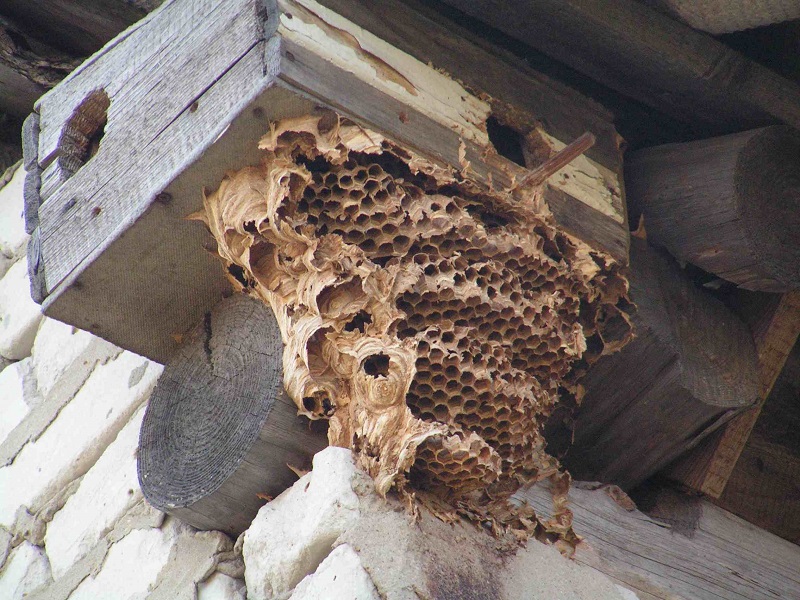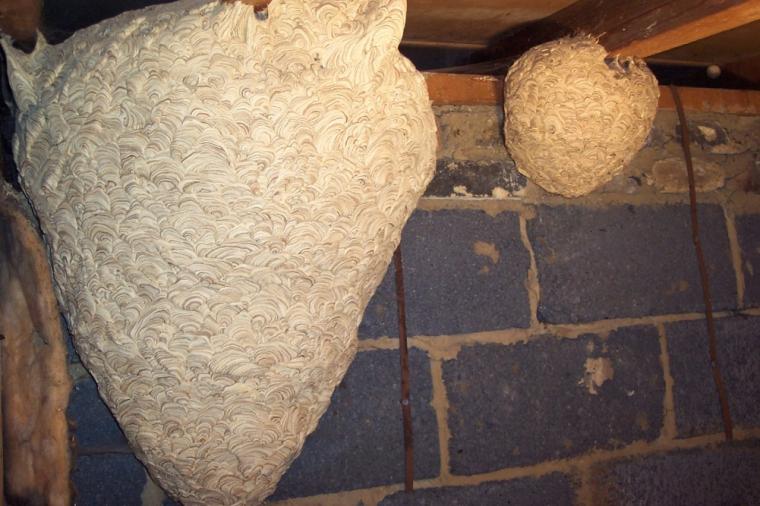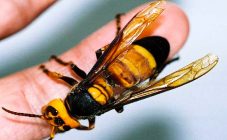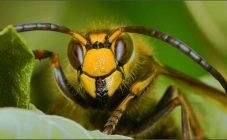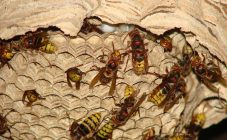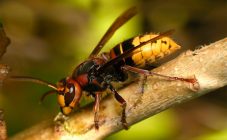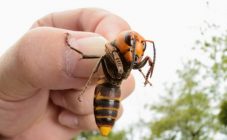Content:
Hornets are large wasps that, by their very appearance, cause fear and an inexplicable feeling of anxiety in most people. It is not surprising, because these insects are predators and amaze with their size - the common hornet reaches 3-3.5 cm, some species are 6 cm in length. In addition, hornet bites are very dangerous for human health - they release twice as much poison in one bite as bees. Since the sting of insects is long and without barbs, they can sting not once, but until the poison ends.
Despite these characteristics, it should be understood that hornets are very beneficial insects for the environment. The fact is that adults mainly feed on plant foods: berries, fruits, nectar. Their larvae feed on "minced meat" from caterpillars, flies, mosquitoes, beetles, spiders and other insects. In just one day, a hornet family catches almost half a kilogram of pests - this is a fairly significant role in the cycle of the ecosystem.
Hornets are rarely aggressive, they do not attack without reason, are not as annoying as ordinary wasps, they try to stay away from people. The reason for the attack is most often the threat to the nest or the insect itself.
What a hornet nest looks like
Hornets are real architects, their hives amaze with thoughtfulness, accuracy, practicality. In its shape, the hornet nest resembles a ball or cone. Its average dimensions are 30-50 cm - width and 50-70 cm - length. Under optimal conditions, structures are found much larger - more than a meter. Moreover, the weight of an empty hive rarely exceeds 1 kg.
By its structure, the nest resembles a multi-storey building with a large number of rooms and several entrances. In this case, the cells are the rooms, the entrances are the compartments. The compartments are formed around the axis, separated by a thin partition. The floors are located perpendicular to the axis - the tiers along which the uterus moves. They are held together by several legs.
One dwelling consists of 3-4 compartments and 7-10 tiers, the whole structure is neat, airy, and can look very impressive.
How to find a hornet's nest
Hornets are inherently beneficial insects. They do not harm people if not touched. If a hornet hive is found in natural conditions or outside the habitat of people, you should not destroy it, destroy it. In this case, insects are part of the natural environment and play an important role assigned to them.
As for the settlement of a hornet family near people, you should be careful - this is a rather dangerous neighborhood. Especially if insects have established a nest in a frequently used or visited place.
The proximity of these giant wasps for bees can become lethal - hornets attack apiaries, destroy adults, larvae, and eat honey. With the regular appearance of even a few groups of predatory insects in a summer cottage or backyard, it is necessary to start looking for a nest.
Hornets prefer quiet, secluded places, protected from the weather - it can be a hollow in a tree, a hole in the ground, abandoned buildings, sheds, attics.
The search for the nest can be organized as follows:
- Conduct preparation. Meeting hornets is quite dangerous for humans. It is very important to properly prepare for it: stock up on anti-allergic drugs, wear closed, sewn from dense material or special protective clothing.
- Start inspection of the premises. Attics, basements, sheds, outbuildings are carefully examined. Nests are often found in window frames, under the floor, and even in the wall. Such an arrangement is dangerous, it will be very difficult to remove the hornets.
- Inspect the entire area. The garden, trees, fallen logs, stumps are being examined. You can look at holes in the ground, in particular, under trees.
- Listen. If visual inspection does not bring results, you can try to hear hornets - they are quite noisy, especially during the construction of the nest.
- Flag an insect. An interesting method that can be used in case the searches did not yield any results. To do this, you need to catch the hornet and mark it with a bright thread or ribbon. Then you can release the insect and carefully follow the direction of its flight.
Having found a hornet nest, the degree of danger that insects can bring is determined, depending on their habitat. If the hive is located in a corner where hornets and people do not intersect, it is better not to touch it, let the wasps live peacefully.
If the dwelling is located in a visited place, you will have to get rid of it. This process is quite complicated and dangerous, since hornets are always active and aggressive in defense.
The most effective methods for killing a hive are:
- Treat with insecticides.
- Drown.
- Burn.
- Pour boiling water over.
These methods are tough and quite risky, so it is better to resort to them only in extreme cases.
How many hornets live in the nest
How many hornets are in one nest depends on the comfort of the location of the dwelling and on external factors: weather conditions, availability of food. One family settles in the building, the number of which is several hundred adult insects, this is approximately 400-600 pieces.
Under optimal conditions in a calm, quiet, warm place with large amounts of food, the family becomes strong, breeding high-quality offspring in significant numbers. In such cases, the hive reaches gigantic dimensions - more than a meter in diameter, in which one to two thousand individuals live.
How hornets build nests
One can only wonder at how hornets build their nest - how much work, discipline, and self-organization is invested in this process. Insects make their homes durable, comfortable. It protects them from heat and cold.
An interesting fact is what hornets make a nest from. The building materials are wood and bark. Hornets especially like birch - which is why their nests are lighter than those of other wasps. Pieces of wood are carefully chewed, moistened with saliva, from the resulting material, honeycombs, walls, partitions, and shells are gradually fashioned, ball by ball.
The place for the nest is chosen by the uterus. She begins to build a future home. First, the uterus molds the first ball of cells in which eggs are laid. After about a week, the eggs turn into larvae, and those, in turn, are reborn into pupae in two weeks. Two weeks later, young working hornets fly out of the nest and continue to build housing.
How many hornets in the nest will develop during the season depends on how productive the work of the new generation of insects will be. After the departure of the working hornets, the eggs of future females and males are laid.They fly out already sexually mature, swarming begins immediately after their departure.
When the hornets fly out of the nest
By the end of autumn, the hornets' dwelling is gradually emptying. To figure out when hornets leave their nests, you need to figure out some of the nuances.
Males die almost immediately after swarming. With the onset of cold weather and frost, the working hornets and the uterus die. During the same period, fertilized females look for a suitable secluded, warm place for wintering.
With the arrival of autumn, females begin to produce a special substance, which in winter serves as a kind of antifreeze that does not allow them to freeze during suspended animation. Trees, hollows, and outbuildings can become temporary housing for hornets. Some individuals can stay in the old hive for the winter.
A small percentage of insects survive the cold and thaw. Already with the onset of the first spring warmth, the females leave their shelter and begin to search for a suitable place to found a new hive.
An interesting fact is that hornets do not settle in the old nest - they always build a new house.
Hornets are useful insects, an irreplaceable link in the ecosystem. There is no need to mindlessly destroy their nests, these insects do not attack for no reason. Large wasps become aggressive only to protect themselves and their home. In the event that the hornets began to build a nest indoors, on the territory of a summer cottage or a personal plot, endangering people's health, you need to try to get rid of it.
